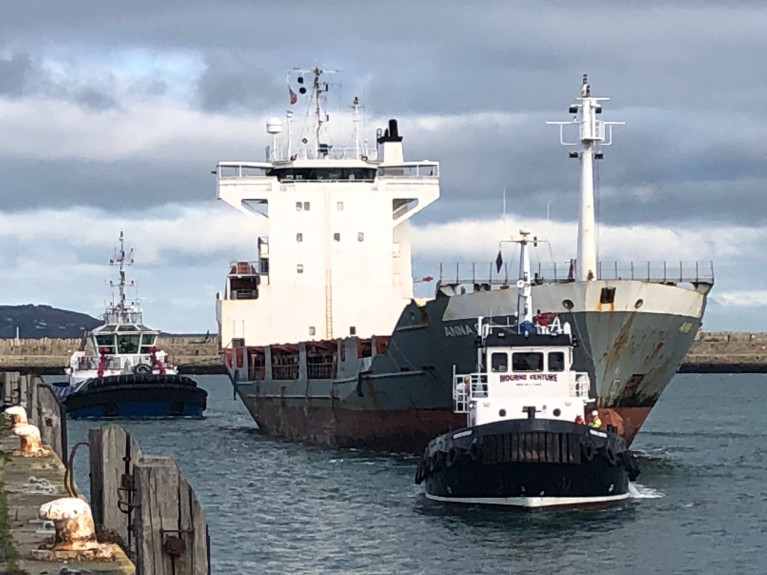It's more than a month ago when in Dun Laoghaire Harbour the towed containership Anna G arrived to the port to effect engine repairs, however the ship remains in port, writes Jehan Ashmore.
The 27 year old Anna G with a 515 TEU capacity, had been towed from Carlingford Lough and following a passage of 9 hours at an average 5 knots, the Cypriot flagged containership arrived in mid-November.
The 3,992grt ship is currently berthed alongside St. Michaels Wharf (as pictured above upon arrival).
According to harbour operator, Dun Laoghaire-Rathdown County Council said there was was no specified time for completion of the repairs, but only an estimation of four weeks. Various engine parts had to be shipped to Germany to be machined and they have now been returned to the ship and are being replaced.
DLRCoCo added, that the Captain is hopeful that these repairs will be completed this week and that the ship will be able to depart before Christmas.
So when the Anna G departs, towing will not be required given such circumstances, however Afloat takes a brief look at the tugs involved that led to the Anna G berth alongside the harbour's St. Micheals Wharf.
Towing duties were first assigned to the Mourne Venture. The veteran escort tug built in 1981 with a bollard pull of 32.9t towed the Anna G which had previuosly been in Warrenpoint Port. The tug is operated by Carlingford Lough Pilots Ltd based in Newcastle, Co. Down.
Upon arrival in Dublin Bay, the containership was assisted by Giano, another 25m long tug yet dating only to 2015. The double ended Azimoth tug has a bollard pull of 60t and is operated by Purple Water Towing Ltd with an address in Mary's Abbey, Dublin.
Both tugs fly the UK civil ensign flag of the 'Red Duster'.

























